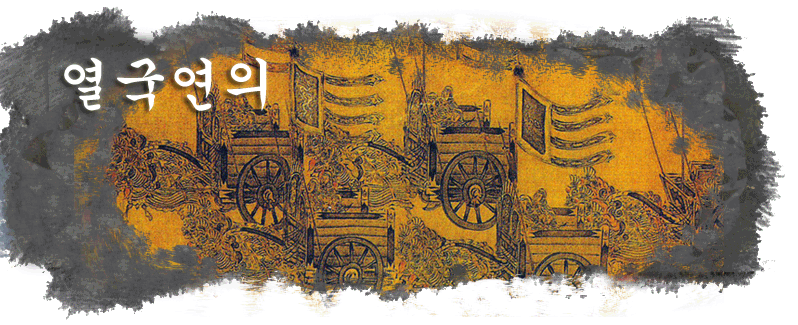|
미국인이 보는 한글의 우수성
지은이 : 유월화
출전 : 민족신문
One example of unique Korean culture is Hangul, the Korean alphabet. There are no records in history of a king made a writing system for the benefit of the common people except in Korea. The Korean alphabet has an exact purpose and objective. So its use cannot be compared with other languages.
한국 문화의 독자성을 가장 잘 보여주는 예가 바로 한글이다. 세계 역사상 전제주의 사회에서 국왕이 일반백성을 위해 문자를 창안한 유래는 찾아볼 수 없다. 그만큼 한글은 문자발명의 목적과 대상이 분명했다. 그러므로 그 효용성은 다른 문자와 비교할 수 없다.
For example, each Chinese character has a meaning, so people have to memorize all of them, but the Korean alphabet is made of phonetic letters just like English. Anyone can learn Hangul in a day, that is why it is called 'morning letter'. It is easy to learn because it can be put together with 10 vowels and 14 consonants. Hangul has 8,000 different kinds of sound and it is possible to write each sound.
예를 들면 한자는 표의문자이므로 모든 글자를 다 외워야 하지만 한글은 영어와 마찬가지로 표음문자이므로 배우기가 쉽다. 그래서 한글은 아침글자라고도 불린다. 모든 사람이 단 하루면 배울 수 있다는 뜻이다. 10개의 모음과 14개의 자음을 조합할 수 있기 때문에 배우기 쉽고 24개의 문자로 약 8,000음의 소리를 낼 수 있다. 즉, 소리나는 것은 다 쓸 수 있다.
Because Japanese letters imitate Chinese characters, they cannot be used without Chinese characters. The chinese government secretly sent scholars to the United States to alphabetize its language. Chinese is too difficult to learn, therefore the illiteracy rate is very high. Chinese thought it would weaken national competitive power.
일본어는 한자를 모방한 문자이기 때문에 한자 없이 독자적인 문자 수행이 어렵고 또, 한자는 너무나 배우기 어렵다. 한때 중국정부는 은밀히 학자들을 미국에 파견해 한자의 알파벳화를 연구한 적이 있다. 그것은 한자가 너무 어렵기 때문에 문맹율이 높고 그것이 국가 경쟁력 약화를 초래한다고 생각했기 때문이다.
Hangul has an independent reading and writing system. It can be used on its own, but some old generations like to use Hangul along with Chinese characters education.
한국인들은 한국어로만 말하고 쓰는 완벽한 언어를 수행할 수 있다. 그러나 일부 기성세대는 한자를 섞어 사용하고 심지어 일부 교수들은 한자교육을 강화해야 한다고 주장하고 있다.
This is an anachronism and absolutely against the globalization of Hangul. Even the Chinese government recognized the weak points of its writing system for the coming 21st century.
중국 정부조차 21세기의 미래 언어로서 약점을 인정한 한자에 대해 이러한 주장을 하는 것은 한마디로 시대 착오이며 한글의 세계화에 역행하는 자세가 아닐 수 없다.
Latin was used as an official language of the Roman Catholic church. It has been used as a custom or religious authority for people who in Western societies, Latin is disappearing.
라틴어는 카톨릭의 공식언어로 사용되었다. 관습상 또는 종교적 권위를 위해 그 의미조차 알지 못하는 사람들에게도 사용되었다. 그러나 지금 서구에서 라틴어는 사라져 가는 언어일 뿐이다.
Hangul was invented 500 years ago. but it has only been used for 100 years by all Koreans. Now it is standing in the world proudly with its value. Korean has been chosen as a foreign language in some universities in the United States and Australia. Now large Korean companies are building Factories in some Asian and Eastern European countries. These companies have invested a lot of money. The managers of those companies are also learning Hangul.
한글은 창제된 지 500년이 되었지만 실제 발전의 역사는 100년이 채 되지 않는다. 그러나 이제 그 한글이 세계 속에 자부심을 가지고 우뚝 서 있는 것이다. 미국이나 호주의 대학에서는 한국어를 제2외국어로 지정해 놓았다. 그리고 많은 한국의 기업들이 아시아나 동부 유럽 국가에 대규모 공장을 짓고 투자를 하고 있다. 그래서 지금 그 회사 간부들은 한글을 배우고 있다.
It is time to invest money and to make an effort to develop Hangul for the 21st century like the French government has done.
The language of the future has a strong economic value. Hangul is seven times faster in computer operation ability than Chinese or Japanese.
이제 한국 정부도 프랑스 정부가 했던 것처럼 한글을 발전시키기 위해
노력과 투자를 아끼지 말아야 한다. 21세기의 언어는 강한 경제적 가치를 갖는다. 컴퓨터에서 한글의 업무능력은 한자나 일본어에 비해 7배 이상 경제적 효과가 있다고 한다.
When Windows 95 appears on your screen, Hangul is breathing on the tips of your fingers beyond the time barrier.
윈도우 95 화면을 보고 더블클릭을 하는 순간 한글의 위력은 500년이란 시간의 벽을 넘어 손끝에서 살아 숨쉰다.
The 21st century will be the age of information. National competitive power depends on the quantity and quality of information. Therefore the national goal for the Clinton administration is to end illiteracy. The American literacy rate is only 79%. The Korean illiteracy rate is near the zero percent mark, because Hangul is easy.
21세기는 정보화 사회다. 즉 정확한 정보의 양과 질이 국가 경쟁력을 좌우한다는 말이다. 그래서 현재 미국의 클린턴 대통령이 국가적 목표로 내세우는 것도 문맹의 퇴치이다. 현재 읽고 쓸 줄 아는 미국인은 고작 79%에 지나지 않는다. 그러나 한국은 쉽고 간결한 한글 덕분에 문맹률 0%라는 경이적인 기록에 육박한다.
|

